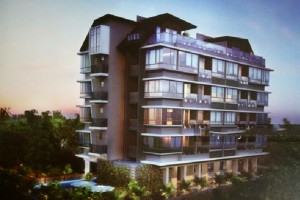It is too premature to determine if the Government’s new measures to deter excessive shoebox units development will distort property market prices. The Minister for National Development, Lawrence Wong, said this in replying to a parliamentary question of “whether stipulating a minimum built-up area of 85 sqm for private properties will distort market prices.”
In replying to the question, Mr Wong said that as the guideline changes were only announced last month and will only take effect in January next year, it would be premature to conclude whether the changes have had any impact on property market prices.
Table of Contents
The Minister further reminded that the property market prices are dependent on many factors beyond the guideline, which includes developers’ bidding behaviour for land, homebuyers’ evolving demand for units of various sizes, as well as how developers adjust the mix of unit sizes for upcoming projects to cater to demand.
Mr Wong said that his Ministry;s new guidelines do not stipulate a minimum built-up area for private properties. It instead imposes a limit on the maximum number of units that developers can build in a development, to manage potential strains on local infrastructure and safeguard the liveability of residential estates.
Within these limits, developers still have the flexibility to provide a range of unit sizes to meet the diverse needs of home buyers, without distorting property market prices.
The Urban Redevelopment Authority (URA) on Oct 17 announced measures to deter excessive shoebox units development. URA said that the revised guidelines will deter developers from developing excessive shoebox units and will also help to manage potential strains on local infrastructure and safeguard the liveability of residential estates. Under new guidelines which will come into effect from January 17 next year, several heartland areas — including Marine Parade, Balestier and Loyang — will be subject to more stringent requirements.
https://www.icompareloan.com/resources/excessive-shoebox-units/
Mr Wong said: “To calculate the maximum number of units that developers can build in each development, the maximum permissible gross floor area of the development is divided by an average unit size. In the recently announced changes to the guidelines, this average unit size was increased from 70 sqm to 85 sqm for all private properties outside the Central Area, and to 100 sqm for selected locations.”
Although it is unclear if the new guidelines to deter shoebox units will distort property market prices, ever smaller housing means rising land prices and that means safer asset values for the banks that lend out home loans and hence greater safety for the value of their secured lending for the Singapore’s banking industry.
 Shoebox units are are properties that don’t exceed 500 square feet. Some of these units, such as The Ebony (Lorong Marican) and Royce Residences (Geylang), are in the range of 300 to 400 square feet. Apart from being tiny, the other distinguishing trait of a shoebox unit is the ridiculously high price per square foot. City Suites at Balestier Road for example, has apartments that range between $1,600 to $1,700 per square foot; and 474 sq ft apartments at 26 Newton go for upward of $2,500 psf.
Shoebox units are are properties that don’t exceed 500 square feet. Some of these units, such as The Ebony (Lorong Marican) and Royce Residences (Geylang), are in the range of 300 to 400 square feet. Apart from being tiny, the other distinguishing trait of a shoebox unit is the ridiculously high price per square foot. City Suites at Balestier Road for example, has apartments that range between $1,600 to $1,700 per square foot; and 474 sq ft apartments at 26 Newton go for upward of $2,500 psf.
Knight Frank Singapore, a leading real estate services company, said majority of shoebox unit investors profited from plonking money into such apartments. Knight Frank’s analysis of resale caveats of shoebox units found that 88.4 per cent of such resale transactions made a profit.
A majority of shoebox unit investors who have put their faith in shoebox units have not been disappointed, said Knight Frank.
Resale transactions analysed (for which there were primary sales of the same units previously) show that owners who have sold their shoebox units enjoyed an average capital gain of 11.5 per cent or an annualised 2.4 per cent over their holding periods. These surpassed the 10.6 per cent average gain for resale transactions of all unit sizes or a 2.0 per cent annualised return for units from new projects launched since 2010.
However, the average transaction price of shoebox apartments in new projects only slightly increased from $727,846 in 2010 to $771,677 so far this year, while median psf pricing marginally increased from $1,473 psf to $1,495 psf over the same period.
But still shoebox unit investors are currently enjoying gross rental yield of around 3.5 percent, with units in Singapore’s northern region posting the highest rate of 4.0 percent.
While developers have been blamed for the ramp-up of such small apartments in their quest for profit maximisation, it is clear that there is demand for these residential units by shoebox unit investors. The report noted that in new non-landed developments outside the central area, sales of shoebox units as a proportion of overall sales peaked from 16 per cent in 2012 to 22 per cent in 2016. As of end-October 2018, the rate remains high at 19 percent.
Mr Paul Ho, chief mortgage cultant at iCompareLoan said: “I have been a strong advocate of setting a minimum size of condo units, in which any condo units built should not be smaller than the stipulated size. With a minimum size (i.e. no smaller than a certain size), the dignity of Singapore living will be ensured and the run away land price will be controlled.”
In adding that it is unlikely that curbs on excessive development of shoebox units will curb property market prices, Mr Ho said: “Shoebox units only serve to make money for developers – as developers can sell the property once they obtain the permit for sale and money will start to come in. This allows too much leverage and hence if developers feel that the cycle is approaching a positive cycle, they will bid very high and pass on the cost to buyers and potentially make explosive profits.
How to Secure a Home Loan Quickly
Are you planning to on buying a new private home but unsure of funding? Don’t worry because iCompareLoan mortgage broker can set you up on a path that can get you a home loan in a quick and seamless manner.
Our brokers have close links with the best lenders in town and can help you compare Singapore home loans and settle for a package that best suits your home purchase needs. Find out money saving tips here.
Our Affordability Tools help you make better property buying decisions. iCompareLoan Calculators help you ascertain the fair value of a property and find properties below market value in Singapore.
Whether you are looking for a new home loan or to refinance, the Mortgage broker can help you get everything right from calculating mortgage repayment, comparing interest rates all through to securing the best home loans in Singapore. And the good thing is that all our services are free of charge. So it’s all worth it to secure a loan through us.
For advice on a new home loan.
For refinancing advice.






